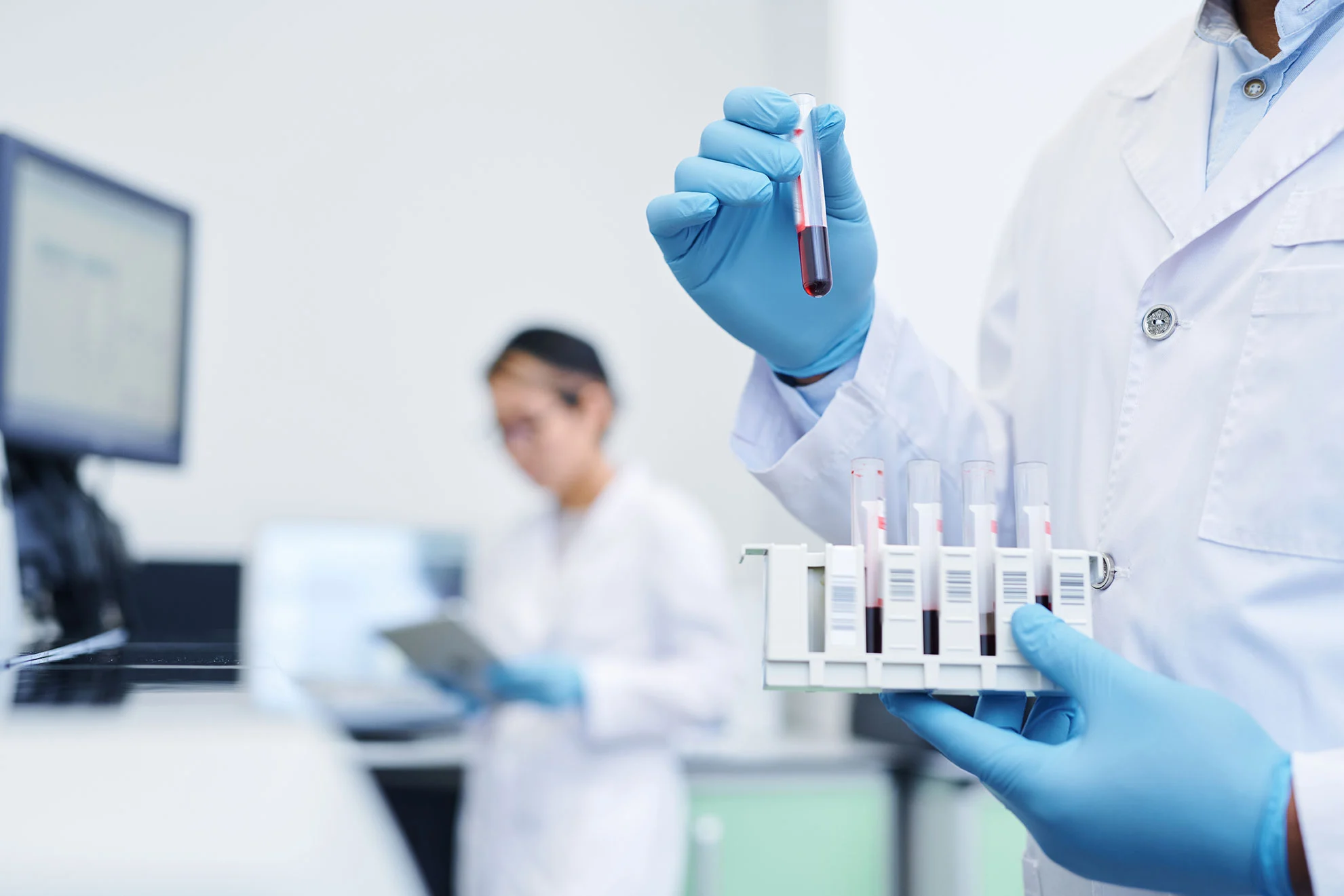
Before you launch your campaign for villagers' justice, do you understand analytical chemistry and toxicology testing?

In early June of this year, a “suspected” kindergarten poisoning case broke out in Taiwan. Young children in a private kindergarten in New Taipei City were suspected of being fed unknown drugs by childcare staff. After learning the news, some parents took their children to the hospital for blood and urine tests. A total of eight children were found to have trace amounts of barbiturates and benzodiazepines (BZD) in their bodies.
Although the final conclusion of this incident is still to be determined by the court and the prosecutor's office, the reason why it caused a strong reaction from the public and even led to a series of political storms before sufficient scientific evidence was available was due to the public's lack of understanding of the limits and application scope of drug detection technology. Toxicology testing is not a new science, but in the past 30 years, the introduction of new instrumental analysis has led to rapid progress in toxicology testing methods. Also, because the speed of technological development far exceeds the speed of textbook revisions, many medical workers who should have professional knowledge of toxicology testing do not have enough time to come into contact with the latest analytical testing technology during their career development stage. In this article, I will explain the science behind this incident from different aspects.
What are barbiturates and benzodiazepines used for?
The protagonists of this incident, barbiturates and benzodiazepines, are common central nervous system depressant drugs with important medical application value. They can produce sedative, anesthetic, anti-epileptic, hypnotic, muscle relaxation, and anti-anxiety effects through different mechanisms. In addition, due to the diverse structures of derivatives of these two classes of drugs, including short-acting and long-acting barbiturates, as well as different benzodiazepines, these derivatives also have different pharmacokinetic properties and clinical applications.
However, the use of barbiturates and benzodiazepines is also associated with certain risks and limitations. Excessive use of barbiturates may cause drowsiness, respiratory depression, or even life-threatening; while excessive use of benzodiazepines may lead to drug dependence or affect cognition and coordination. Therefore, when using these drugs, you must strictly follow the doctor's instructions to properly control the dosage and pay attention to the potential risks and limitations to ensure their safe and effective use.
Principles of Contemporary Toxicology/Drug Testing Technology
At present, the commonly used methods used by testing units to detect drug molecules such as barbiturates and benzodiazepines include immunoassay and liquid chromatography-mass spectrometry (LC-MS). The principles of these two methods are briefly explained below.Immunoassay
A method of detection through the specific reaction of antigen and antibody. It includes a variety of different techniques, such as enzyme-linked immunosorbent assay (ELISA), fluorescent immunoassay (FIA), etc. These methods all utilize the specific binding between antibodies and target substances (such as drugs) to produce non-covalent bonds, and then indirectly measure the presence of the target substance by detecting the signals of the antibodies and marker substances. Immunoassay has obvious advantages in speed, price and convenience, making it widely used in most clinical tests at home and abroad, especially in rapid screening of drugs and preliminary diagnosis of diseases. In immunoassay, the general steps include sample processing, reagent addition, specific binding, washing, and signal reading. However, because biological specimens often contain tens of thousands of chemical components with different structures (including nucleic acids, proteins, metabolites, lipids, carbohydrates, etc.), as long as the specimen contains a small amount of chemical molecules with a similar structure to the target analyte, it is possible to bind to the antibody to form a cross reaction, thereby generating a weak positive signal, which in turn causes interference in signal interpretation. This situation where "a signal appears when it should not appear" is called a "false positive". In this incident, the positive immunological rapid screening test for benzodiazepine was later proved to be a false positive.Liquid chromatography mass spectrometry
It is an analytical technique that combines liquid chromatography (LC) and mass spectrometry (MS). Liquid chromatography can separate sample components based on their chemical properties and affinity; mass spectrometer is like a molecular "weighing scale" that can measure the mass of molecules (mass-to-charge ratio) to analyze and identify chemical substances. Compared with immunoassay, liquid chromatography-mass spectrometry has higher accuracy and specificity, and can more accurately identify drugs and metabolites in complex samples and perform precise quantitative analysis. Because the mass spectrometer can distinguish different compounds with similar structures, it greatly reduces the probability of false positives in drug screening and can accurately quantify target molecules. Currently, drug and poison screening guidelines of governments around the world list mass spectrometry as the gold standard method for drug testing.
To use a less precise but perhaps easier to understand analogy, if the "poison molecule" is likened to the "new coronavirus" (SARS-CoV-2), then the immunoassay is similar to the rapid antigen test that requires picking the nose and is often used to detect severe acute respiratory syndrome (COVID-19); the mass spectrometer is the quantitative real-time polymerase chain reaction (qPCR) used for drug and poison detection. Just like in the first one or two years after the outbreak, when the prevalence of COVID-19 was not very high, all suspected confirmed patients with positive rapid screening tests had to undergo qPCR. This is because rapid screening is prone to false positives, so it is necessary to verify with qPCR to be truly confirmed. In poison and drug testing, mass spectrometers are like qPCR for detecting the new coronavirus, which can be used as the gold standard for confirming the final results.
So here comes the point. According to current laws and regulations, for small molecule chemical drugs such as barbiturates and benzodiazepines, any test results using rapid immunoassay screening cannot be used as a formal test report before formal confirmation by mass spectrometry analysis, let alone as evidence in court! At the beginning of this incident, a small number of online opinion leaders and public representatives in the medical field took the report of the rapid immune screening and hyped it up in public, causing panic among the general public. This is a very rare occurrence in the international community.
Of course, LC-MS also has some limitations. It has a high cost, including the purchase, maintenance, and operation costs of the instrument. Therefore, not all medical institutions have the ability to equip mass spectrometers. In the past, they were mostly seen in instrument centers of universities and other research institutions. However, Taiwan has experienced many food safety incidents in the past decade or so, and the demand for drug testing has increased significantly. As a result, government departments have purchased a large number of mass spectrometers. Even farmers' associations and fruit and vegetable markets have begun to deploy mass spectrometers in recent years. However, the use of liquid chromatography mass spectrometers requires professionals who are familiar with the operation of the instrument and the interpretation of the results. However, students with relevant professional majors often choose to work in the semiconductor industry after graduation. Therefore, whether the testing manpower for mass spectrometers in the future can keep up with the speed of procurement is an important challenge that relevant inspection units will inevitably face in the future.
In general, immunoassay and liquid chromatography-mass spectrometry are both common methods for drug analysis. Immunoassay has advantages in speed, price and simplicity, but it has problems with false positives and susceptible specificity; liquid chromatography-mass spectrometry shows higher levels of accuracy and specificity, but it carries higher costs and professional technical requirements. We must fully understand the usage characteristics of different analytical instruments to help us choose appropriate detection methods and ensure the accuracy of test results. The reason why the "suspected" kindergarten poison feeding case in New Taipei City has caused a lot of controversy is that most of the general public and even the social elites who hold the right to speak are not clear about the technical principles and scope of application of this technology. Through continuous research and technological innovation, we can improve and perfect these test methods, enhance their specificity, accuracy and reliability, and meet a wider range of application needs.
Testing is not a panacea! How to interpret “background signals”?
The above-mentioned principles and application scope of poison detection involve the core concepts of analytical chemistry and biochemistry. For the general public who have not received professional education, the detection results and interpretations of many poisons are often counterintuitive. In response to this, testing experts from all over the world have also developed countermeasures by formulating standard operating procedures to standardize the testing process in order to avoid deviations caused by subjective consciousness among different people. However, even experts in related fields may have completely different interpretations of the same test results due to differences in professional training. Taking this incident as an example, doctors and biochemists will have different opinions.
The doctor's explanation: "There is no barbiturate in cold medicine, so a positive reaction in the immunoassay means that there are toxic ingredients in the child's body, and the source of these ingredients needs to be traced."
Biochemist's interpretation: "There is no barbiturate in cold medicine, so the positive result of immunoassay test means that there are other ingredients in the cold medicine that will bind to the antibodies in the rapid test reagent, resulting in a weak positive reaction in the immunoassay test."
The reason for these two different ideas is that medical students are trained to respond quickly to test results and prescribe the right medicine, while basic science students are trained to first check whether the method is correct and then make a judgment based on the experimental results. Nowadays, whether in Taiwan or the United States, most hospital laboratories generally still use rapid immunoassays for toxicology testing. Therefore, the drug components taken by patients, and even the body's own biochemical molecules in the blood, may have the opportunity to produce weak non-covalent bonds with antibodies and appear weak positive reactions (the test report of the positive benzodiazepine rapid screen in Xizhi even showed a weak signal in the amphetamine item, but it was listed as a negative reaction because it was below the threshold). It is particularly important to emphasize here that a positive reaction in the test report does not mean that the drug contains barbiturates and benzodiazepines, but is the result of the inherent limitations of the testing method.
The above conclusions are what I will teach my students in the first few classes of analytical chemistry in my sophomore year:
“Because biological samples have complex components, interference from the matrix is unavoidable during instrument analysis.”
"Signals below the limit of detection are not statistically significant and should be considered background noise."
The principle of "presumption of innocence" in forensic medicine
Since it is often necessary to face the inherent limitations of test methods, "presumption of innocence" is the basic training of forensic medicine. However, this principle is exactly the opposite of the "inference of illness" that ordinary doctors make when reading test reports.
Nowadays, all disease treatment drugs must pass strict safety tests before they can be approved for marketing. This is because doctors who have received orthodox medical training generally use the "disease inference" to assume that the patient has a physical condition, so they will most likely prescribe the patient to take the drug for treatment, and then check after a period of time to confirm whether the patient's various values have improved as a result. The reason why doctors use the "presumption of illness" is that if the patient is clearly sick, but the doctor assumes that he is not sick, the patient will miss the critical treatment period, which will cause greater trouble. So when a doctor sees that the test results are above the limit, it is better to assume that the patient is at risk of getting sick than to assume that he is not sick.
But this is not the case with forensic training. If a person who clearly has not committed any crime is sentenced based on weak evidence, the loss of life that he suffers from going to jail is something that he cannot afford to compensate. In addition, legal judgments emphasize the effectiveness of evidence, so when a forensic doctor sees that the initial screening results of a toxicology test are positive, he or she will not rush to draw a conclusion, but will use a more accurate method to retest. Therefore, the principle of "presumption of innocence" is the core foundation for protecting human rights.
Taking urine testing for poisons as an example, the initial screening method of immunoassay for poisons has a certain percentage of false positive probability, so the initial screening results are not evidentiary in court, and a more sophisticated mass spectrometry analysis report is required to be presented as evidence in court. The controversy surrounding the suspected feeding of barbiturates to young children lies in the fact that some opinion leaders used the initial toxicology screening report as a court verdict and published opinions that had not been reviewed by professional peers, which in turn caused panic among the public and parents, leading to such a huge uproar.
The following is an excerpt from a Facebook post by Dr. Tseng Wei-chieh, chief physician at the Child and Adolescent Protection Medical Center of National Taiwan University Hospital, which is worth pondering:
"The purposes of clinical examination and forensic toxicology examination are different. Clinical examination is to quickly diagnose and treat patients, while forensic toxicology examination is to determine guilt (in this case, it is to find out whether drugs were given to the patient). Therefore, forensic toxicology must absolutely avoid any type I error [note]."
[Note] Type I error and type II error are both errors that may be made in hypothesis testing in statistical analysis. Type I error means that the null hypothesis (H0) is true, but the statistical analysis results deny the null hypothesis; Type II error means that the null hypothesis is actually incorrect, but the statistical analysis results accept the null hypothesis.
Readers who are interested in this Facebook post can also click here to view the post → https://reurl.cc/M84zDp
Scientific evidence is the only criterion for testing truth
It takes more than ten years of education to develop scientific literacy, but trust between people in society can be destroyed in just a few days. Before the deadline for this article, there were reports that the samples that had originally tested positive in the initial immune screening were confirmed to contain no barbiturates or benzodiazepines after re-testing by mass spectrometry. Although the suspicion of young children being fed drugs has gradually subsided, the trust between parents and preschool teachers has been torn apart. Despite this, we can perhaps still look at it positively. After experiencing such nationwide emotional waves and the turmoil of political language, everyone can finally calm down and reflect, which will further accelerate Taiwan's establishment of a more complete system and a cultural cultivation that respects professionalism. I sincerely hope so.
Experts and scholars: Cheng-Chih Hsu / Founder and CEO of Leeuwenhoek Biotech, Associate Professor of Chemistry at National Taiwan University, and current director of the Taiwan Mass Spectrometry Society
The original article was published in the 644th issue of Science Monthly, "Before launching the villagers' justice movement, do you understand analytical chemistry and toxicology testing?" 〉, original URL:https://www.scimonth.com.tw/archives/6482



